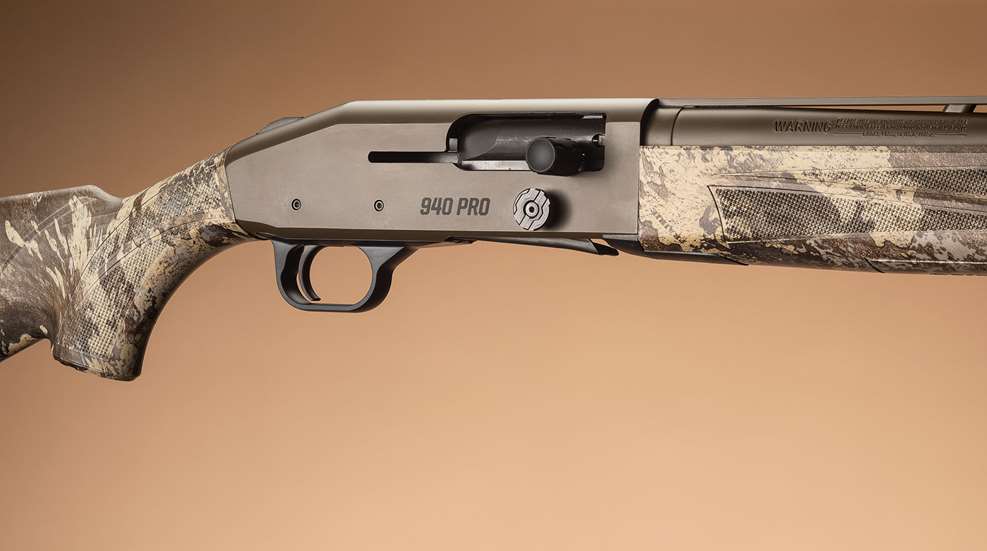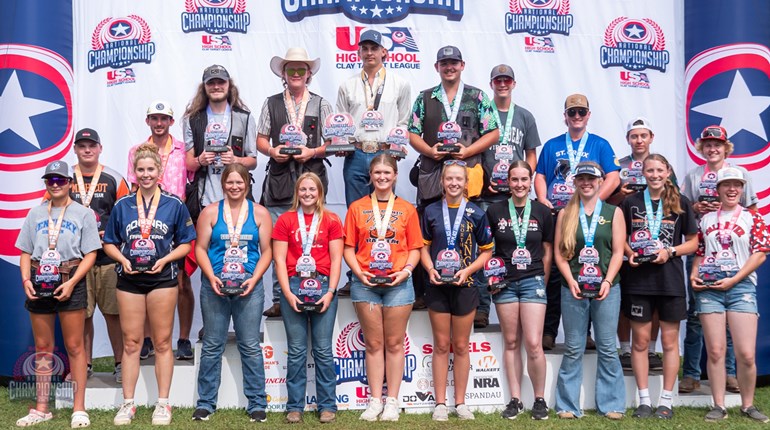
Since 1961 the O.F. Mossberg gun company has sold more than 12 million Model 500 pump shotguns to hunters, home defenders and servicemen everywhere, making it the most popular shotgun of all time. Indeed, Mossberg’s value-price pumps have become so prolific that plenty of sportsmen forget about the company’s Model 930 semi-auto line launched in 2004; we generally just equate the name Mossberg with pump.
It didn’t help that the 930, while perfectly functional, was awfully vanilla. At a time when Benelli and Beretta were dominating the semi-auto shotgun markets with slick new actions, ergonomic advancements and high-tech recoil mitigation devices, the 930 was basically another gas-action semi-auto, albeit with a reasonable price tag. But the iconic firm–the oldest family owned American gun company–is not one to give up easily.

In 2020 Mossberg unveiled its 940 JM Pro, a semi-auto competition shotgun designed by likely the best all-around shooter in history, Jerry Miculek. It’s a gun conceived to compete with the best gas-action semi-autos available, yet thanks to Mossberg’s well-oiled production line and sheer sales volume, the 940 is priced significantly less. Mossberg hoped to emulate the marketing technique of car companies who build F1 race cars; that is, they began the 940’s campaign by building the best model possible to show the world what it could do before introducing specific models geared toward blue-collar American sportsmen.
To that end, in ’21 Mossberg released its 940 Pro Field, a do-all semi auto for upland hunters; later that fall it introduced its 940 Pro Waterfowl and 940 Pro Snow Goose models. I’ll focus on the Waterfowl version here.
The 940’s Guts
While the 940 has received a facelift to be sure, the new gun did not simply receive aesthetic upgrades. The real story is its internals that were redesigned to run more efficiently with a wider range of ammo.
Engineers worked hard at this, and came up with a gas delivery system featuring two oversized ports in the gas cylinder. A robust, short-stroke piston assembly accepts the burst of gas from the fired shell and violently slams rearward, moving the spacer tube, pusher assembly and the bolt assembly rearward to cycle the action at similar speeds regardless of the load.
Another key to the 940’s enhanced reliability is owed to its innovative spacer tube. This 3½-inch aluminum cylinder that rides on the mag tube features grooves to reduce surface area and to allow carbon fouling and moisture from condensation a place to go rather than just building friction under it. (Even though you don’t see it, when a gun warms up from firing in cold weather, there will be condensation.) All critical internal parts are boron-nitride-coated to further reduce friction. Translated, the 940 is touted to run 1,500 rounds without cleaning compared to 500 of the 930.
Externally, the 940 features several key upgrades. Most notably, all outward metal is Cerakoted in a color Mossberg calls Patriot Brown. The coating provides camouflage in dulling any glinty metal and, mainly, protects the gun from rusting if you hunt with it in the rain and fail to clean it for a few days. With all the options available today, I would not buy a dedicated waterfowl gun without such a coating.
Next, its plastic buttstock is adjustable via five spacers and shims that alter drop at comb/heel and cast on/off, as well as a modular buttpad system that makes the gun’s LOP adjustable from 13 inches to 14¼. If the shooter will take the time to adjust this shotgun to fit himself or herself, they’ll find they shoot better and recoil bothers them less. Next, engineers slimmed the fore-end and made it flush-fitting to the receiver. Initial Pro Waterfowl models sport a 28-inch, vent-rib barrel with a threaded muzzle for choke tubes. The guns come with an extended and ported X-Factor modified choke tube that’s a great upgrade.

The shotgun features oversized controls to reduce fumbling even while wearing gloves. The bolt release button also serves another nifty purpose; with the gate manually depressed, a push will release a shell from the four-round magazine tube so the mag can be emptied—or a single shell replaced for when a goose suddenly bombs the spread—without cycling each shell through the chamber. Its safety is wholly Mossberg and located on the tang. The 940’s trigger averaged a superb 4-pound, 12-ounce pull weight.
On the range and in the blind, I found the 940 came up to my eye naturally; instantly I hit fast-flying targets without conscious thought, indicative of a gun that shoots where I look. I give thanks to great stock fit and a well-regulated barrel. Furthermore, it’s silky to load owing to its fore-end contour, non-pinching gate and finger-friendly springs. Even including a break-in period, I could not get the gun to jam with 1⅛-ounce loads and heavier. If there is one thing I could be critical about it’s the stock material: I wish it were a little softer, perhaps higher-quality feeling and less brittle.
Nonetheless, it delivered rich and symmetrical patterns with Winchester 3-inch DryLok Super Steel No. 2 shot using the gun’s modified choke tube. Although recoil with this 1475 fps, 1½-ounce load is not what I’d call mild considering the gun’s 7¾-pound weight, it was milder than expected thanks to the 940’s gas system, recoil pad and return springs that are efficient recoil soakers.
Considering all the 940 Waterfowl’s features combined with its reliability and its price of just under a grand, I no longer think of Mossberg as just a maker of affordable pumps.
Technical Specifications
• Type: gas-operated semi-automatic shotgun
• Gauge/Chamber: 12/3"
• Capacity: 4+1
• Barrel: 28"; vent rib, interchangeable choke tubes
• Trigger: single-stage; 4 lbs., 12 ozs. pull weight
• Sights: Tri-Comp fiber optic front sight
• Safety: two-position, tang mounted
• Stock: synthetic; TrueTimber Prairie camo; LOP adjustable 13"-14¼"; adjustable for cast and drop at comb
• Metal Finish: Cerakote Patriot Brown
• Overall Length: 48.75"
• Weight: 7 lbs., 9 ozs.
• Accessories: 1 X-Factor Extended Choke Tube (M), 3 choke tubes (IC, M, F), case, wrench, 5 shims, 4 spacers, 3 buttpad spacers
• MSRP: $1,092; mossberg.com




































